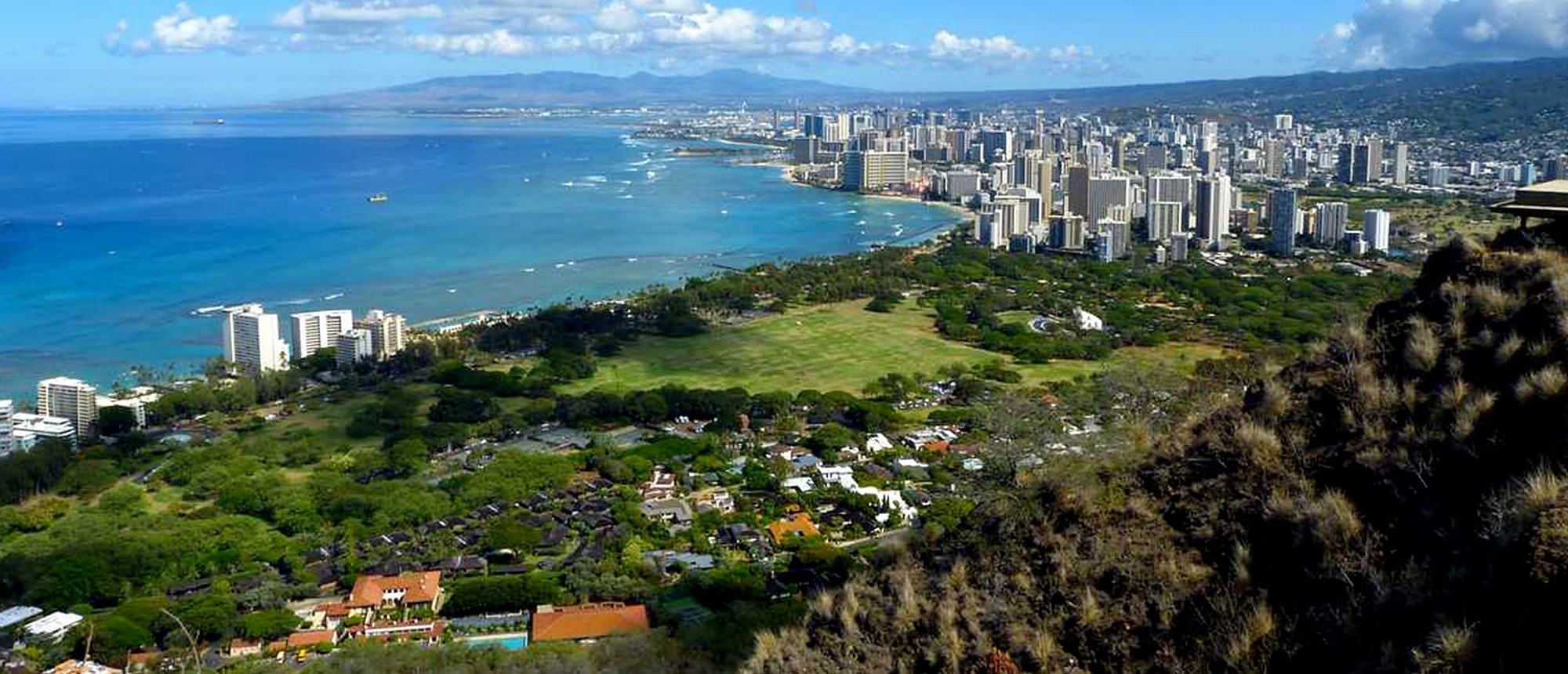Hawaii’s National Climate Assessment
Warmer oceans are leading to increased coral bleaching and disease outbreaks and changing distribution of tuna fisheries. Freshwater supplies will become more limited on many islands. Coastal flooding and erosion will increase. Mounting threats to food and water security, infrastructure, health, and safety are expected to lead to increasing human migration.
Introduction
The Hawai‘i and U.S. Affiliated Pacific Islands region includes the state of Hawai‘i, the Commonwealth of the Northern Mariana Islands, the Federated States of Micronesia, the Republic of the Marshall Islands, the Republic of Palau, the Territory of American Samoa, and the Territory of Guam. The Highlights section below offers a high-level overview of climate change impacts on this region, including the five Key Messages and selected topics
Key Message: Changes to Marine Ecosystems
Warmer oceans are leading to increased coral bleaching events and disease outbreaks in coral reefs, as well as changed distribution patterns of tuna fisheries. Ocean acidification will reduce coral growth and health. Warming and acidification, combined with existing stresses, will strongly affect coral reef fish communities.
Key Message: Decreasing Freshwater Availability
Freshwater supplies are already constrained and will become more limited on many islands. Saltwater intrusion associated with sea level rise will reduce the quantity and quality of freshwater in coastal aquifers, especially on low islands. In areas where precipitation does not increase, freshwater supplies will be adversely affected as air temperature rises.
Key Message: Increased Stress on Native Plants and Animals
Increasing temperatures, and in some areas reduced rainfall, will stress native Pacific Island plants and animals, especially in high-elevation ecosystems with increasing exposure to invasive species, increasing the risk of extinctions.
Key Message: Sea Level Rising
Rising sea levels, coupled with high water levels caused by tropical and extra-tropical storms, will incrementally increase coastal flooding and erosion, damaging coastal ecosystems, infrastructure, and agriculture, and negatively affecting tourism.
Key Message: Threats to Lives, Livelihoods, and Cultures
Mounting threats to food and water security, infrastructure, and public health and safety are expected to lead to increasing human migration from low to high elevation islands and continental sites, making it increasingly difficult for Pacific Islanders to sustain the region’s many unique customs, beliefs, and languages.
Hawai‘i
The U.S. Pacific Islands are at risk from climate changes that will affect nearly every aspect of life. The region includes more than 2,000 islands spanning millions of square miles of ocean. Rising air and ocean temperatures, shifting rainfall patterns, changing frequencies and intensities of storms and drought, decreasing streamflows, rising sea levels, and changing ocean chemistry will threaten the sustainability of globally important and diverse ecosystems on land and in the oceans, as well as local communities, livelihoods, and cultures.
On most islands, increased temperatures coupled with decreased rainfall and increased drought will reduce the amount of freshwater available for drinking and crop irrigation. Climate change impacts on freshwater resources will vary with differing island size and topography, affecting water storage capability and susceptibility to coastal flooding. Low-lying islands will be particularly vulnerable due to their small land mass, geographic isolation, limited potable water sources, and limited agricultural resources. Sea level rise will increase saltwater intrusion from the ocean during storms.
Rising sea levels will escalate the threat to coastal structures and property, groundwater reservoirs, harbor operations, airports, wastewater systems, shallow coral reefs, sea grass beds, intertidal flats and mangrove forests, and other social, economic, and natural resources.
Coastal infrastructure and agricultural activity on low islands will be affected as sea level rise decreases the land area available for farming, and periodic flooding increases the salinity of groundwater.
Higher Sea Level Rise in Western Pacific
Many of Hawai‘i’s native birds, marvels of evolution largely limited to high-elevation forests, are increasingly vulnerable as rising temperatures allow mosquitoes carrying diseases like avian malaria to thrive at higher elevations. Mangrove area in the region could decline 10% to 20% in this century due to sea level rise. This would reduce the nursery areas, feeding grounds, and habitat for fish, crustaceans, and other species, as well as shoreline protection and wave dampening, and water filtration provided by mangroves. Pacific seabirds that breed on low-lying atolls will lose large portions of their breeding populations as their habitat is increasingly and more extensively covered by seawater.
Economic impacts from tourism loss will be greatest on islands with more developed infrastructure. In Hawai‘i, for example, where tourism comprises 26% of the state’s economy, damage to tourism infrastructure could have large economic impacts – the loss of Waikiki Beach alone could lead to an annual loss of $2 billion in visitor expenditures.
Because Pacific Islands are almost entirely dependent upon imported food, fuel, and material, the vulnerability of ports and airports to extreme events, sea level rise, and increasing wave heights is of great concern. Climate change is also expected to have serious effects on human health, for example by increasing the incidence of dengue fever. In addition, sea level rise and flooding are expected to overwhelm sewer systems and threaten public sanitation.
The traditional lifestyles and cultures of Indigenous communities in all Pacific Islands will be seriously affected by climate change. Drought threatens traditional food sources such as taro and breadfruit, and coral death from warming-induced bleaching will threaten subsistence fisheries in island communities. Climate change impacts, coupled with socioeconomic or political motivations, may be great enough to lead some people to relocate. Depending on the scale and distance of migration, a variety of challenges face migrants and the communities receiving them.

